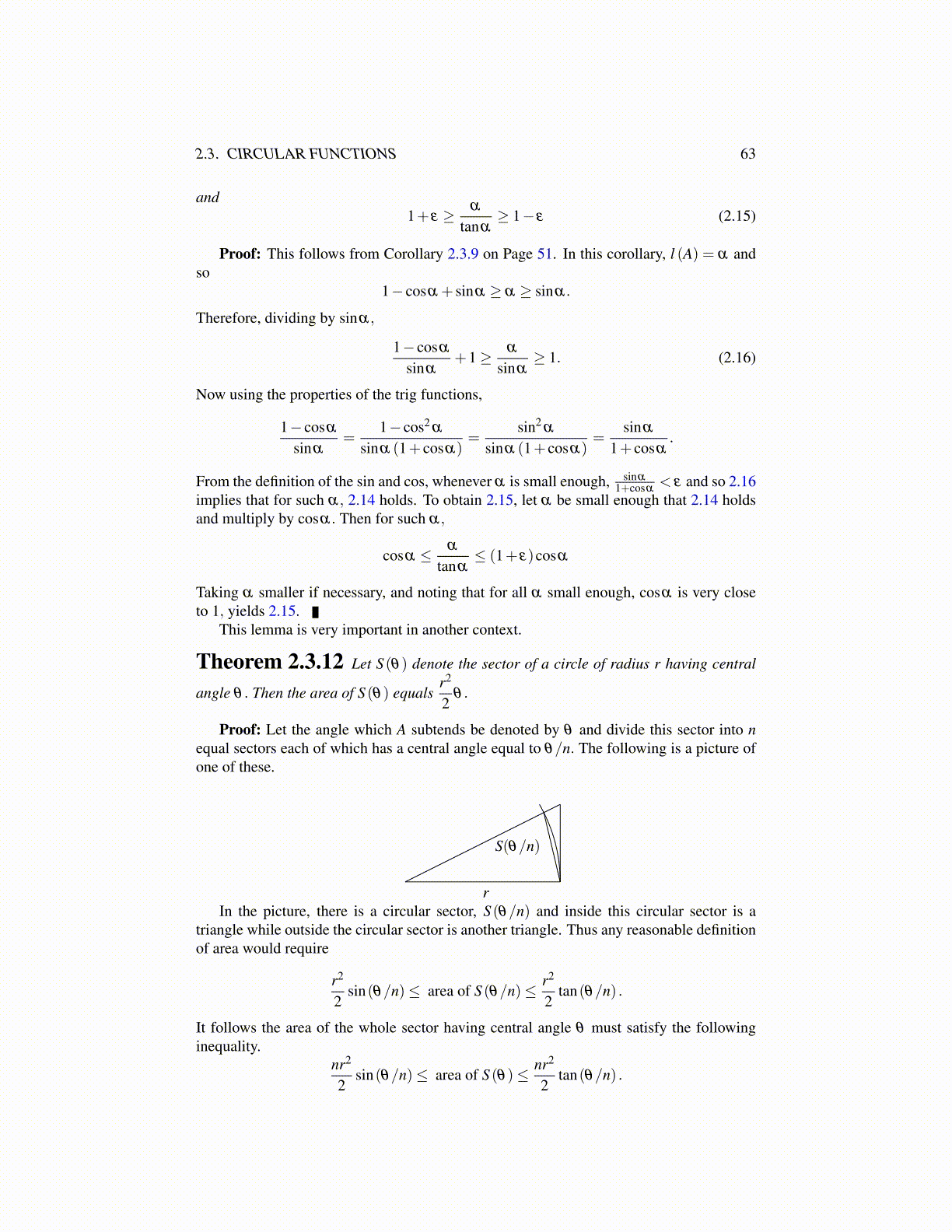
2.3. CIRCULAR FUNCTIONS 63
and1+ ε ≥ α
tanα≥ 1− ε (2.15)
Proof: This follows from Corollary 2.3.9 on Page 59. In this corollary, l (A) = α andso
1− cosα + sinα ≥ α ≥ sinα.
Therefore, dividing by sinα,
1− cosα
sinα+1 ≥ α
sinα≥ 1. (2.16)
Now using the properties of the trig functions,
1− cosα
sinα=
1− cos2 α
sinα (1+ cosα)=
sin2α
sinα (1+ cosα)=
sinα
1+ cosα.
From the definition of the sin and cos, whenever α is small enough, sinα
1+cosα< ε and so 2.16
implies that for such α, 2.14 holds. To obtain 2.15, let α be small enough that 2.14 holdsand multiply by cosα. Then for such α,
cosα ≤ α
tanα≤ (1+ ε)cosα
Taking α smaller if necessary, and noting that for all α small enough, cosα is very closeto 1, yields 2.15.
This lemma is very important in another context.
Theorem 2.3.12 Let S (θ) denote the sector of a circle of radius r having central
angle θ . Then the area of S (θ) equalsr2
2θ .
Proof: Let the angle which A subtends be denoted by θ and divide this sector into nequal sectors each of which has a central angle equal to θ/n. The following is a picture ofone of these.
r
S(θ/n)
In the picture, there is a circular sector, S (θ/n) and inside this circular sector is atriangle while outside the circular sector is another triangle. Thus any reasonable definitionof area would require
r2
2sin(θ/n)≤ area of S (θ/n)≤ r2
2tan(θ/n) .
It follows the area of the whole sector having central angle θ must satisfy the followinginequality.
nr2
2sin(θ/n)≤ area of S (θ)≤ nr2
2tan(θ/n) .